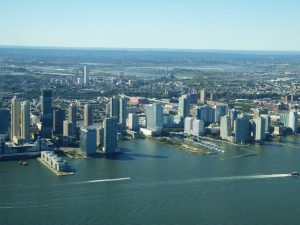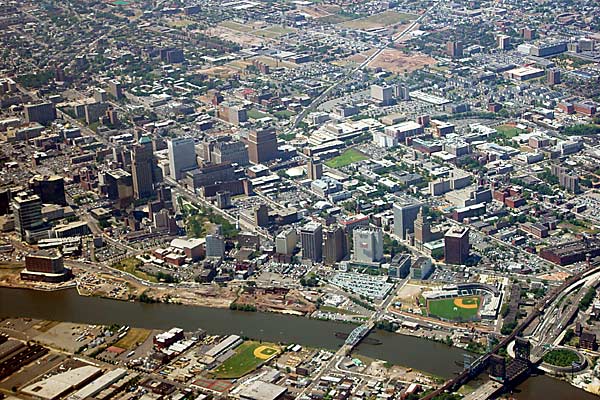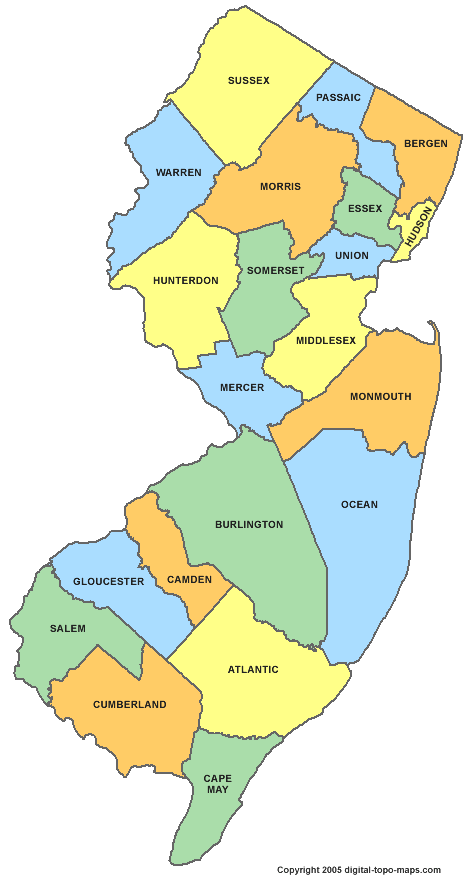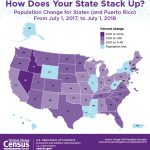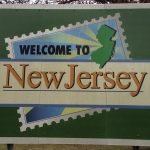New Jersey Future Blog
Population Growth in Older Centers (but not all of them) Continues To Outstrip the Rest of the State
June 3rd, 2019 by Tim Evans
The Census Bureau last week released municipal population estimates for 2018, and the story is similar to what it has been all decade: Redevelopment continues to be the name of the game in New Jersey.
The eight urban centers identified by the New Jersey State Development and Redevelopment Plan (Newark, Jersey City, Paterson, Elizabeth, Trenton, Camden, New Brunswick, and Atlantic City) as a group have accounted for 18.6 percent of statewide population growth from 2010 to 2018, after having contributed only 4.0 percent of growth in the 2000s and only 1.5 percent in the 1990s. (However, this combined growth statistic does mask some important variation among the individual cities, as will be noted below.)
State population has grown by a relatively anemic 1.3 percent since 2010, while it grew by 4.5 percent in the 2000s and by 8.6 percent in the 1990s. Although the end of the decade is still two years away, growth for the full decade of the 2010s is thus on track to fall well below these recent benchmarks. But growth rates in several of the State Plan urban centers have exceeded the statewide rate so far this decade: Jersey City’s population is up by 7.2 percent since 2010, Elizabeth’s is up 3.1 percent, New Brunswick’s is up 2.8 percent, and Newark’s is up 1.8 percent.
Jersey City, an early harbinger of the trend back toward urban centers, has actually been growing since 1980, but its numerical gain of almost 18,000 residents from 2010 to 2018 outstrips its increases in all recent decades. Jersey City hasn’t seen growth like this since before 1930.
Newark experienced its reversal of fortune a bit more recently, posting a small gain of just under 3,600 people for the 2000s after having lost population every decade from 1950 through 2000. But its increase of 4,952 since 2010 is already larger than its 2000s gain. Newark’s resurgence may have lagged Jersey City’s by a decade or two, but it’s happening now.
Elizabeth and New Brunswick have gained people so far this decade too, although at rates that are somewhat lower than in the 2000s and 1990s.
As mentioned above, the other four urban centers are not yet sharing in the growth. Atlantic City’s and Camden’s populations are both down by 4.4 percent since 2010, Trenton’s by 1.1 percent, and Paterson’s by 0.4 percent. So the generally rising tide for older urban areas is not necessarily lifting all boats.
In the bigger picture, though, that tide really is rising. Population growth this decade continues to be concentrated in cities, towns, and older suburban downtowns. The 124 municipalities that score well on all three of New Jersey Future’s metrics of compact, walkable urbanism – net activity density (population plus jobs per developed square mile), presence of a mixed-use center, and local street network density – together have accounted for 70.9 percent of statewide population growth since 2010, after having accounted for only 13.6 percent in the 2000s and 22.6 percent in the 1990s.
These 124 municipalities as a group have grown by 2.5 percent since 2010 – nearly double the statewide growth rate. This is in marked contrast to the 2000s, when this same group of municipalities had a combined growth rate that was barely one-third of the statewide rate – 1.6 percent, compared to 4.5 percent for the state as a whole. Part of the reason for these places’ resurgence is almost certainly because they are blessed with the walkable, live-work-play-shop development patterns that Millennials are looking for as they form their own households. By the same token, their continued success probably depends on their ability to add enough appropriate new housing options to be able to meet this new demand; otherwise, young adults will continue to leave the state in search of cheaper alternatives.

